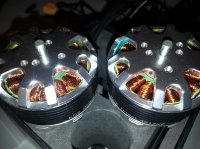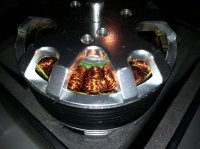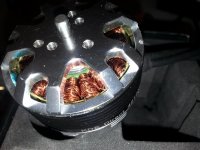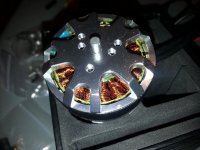I just received my order of eight KDE4012 400kV motors and the first one I opened, the copper windings look to be kind of sloppy. So I opened a second one and looked at it, this one looked better. The one on the left is the first one I opened that looked sloppy, the one on the right is the second one I opened that looks better.

My question are:
Here are some additional photos of the motor in question:



My question are:
- Is it safe to operate the sloppy one?
- Will there be a performance loss on the sloppy one?
- Are there any downsides to sloppy one?
Here are some additional photos of the motor in question:




